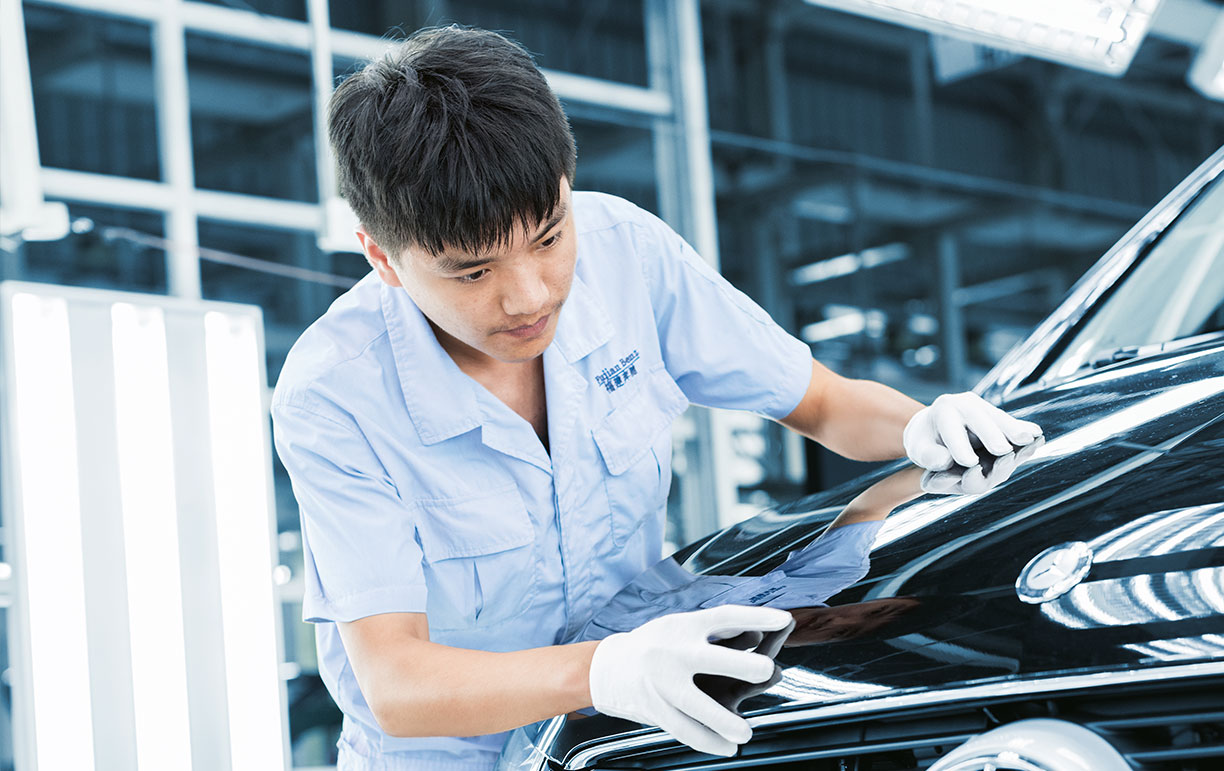
Starstruck.
Weakening market? Far from it! The new Mercedes-Benz V-Class continues to forge ahead in China. In a country that is developing into a discerning, luxury-oriented market, this project has a significant growth potential. But it could hardly be accomplished without finely-tuned logistics.

What appears to be just a few flicks of the wrist nevertheless carries tremendous symbolic weight. For everyone knows: a Mercedes-Benz stands for “the best or nothing.” Wei Jianyou reaches into the box by his side, removes the padded plastic packaging and screws the three-pointed star into the circular hole in the radiator grill – done! Here at the Fujian Benz Automotive plant in Fuzhou the Mercedes-Benz star is being fitted into the new V-Class. This straightforward operation is followed by a final quality check and then the luxurious multi-purpose vehicle (MPV) rolls off the assembly line and into one of the many dealerships dotted around China.
A vast amount of preparation goes into ensuring that the Chinese V-Class is just as entitled to bear the iconic star as vehicles of the same type produced in the company’s global competence center for mid-size vehicles in the Spanish city of Vitoria. After all, each of these vehicles is made of more than 10,000 individual parts: screws, rims, springs, buttons, rivets, gaskets, cables, pistons, metal sheets. Some of these parts are pre-assembled before being delivered. These components include the engine, gearbox, axles but also the steering column, air conditioning unit, dashboard or center console. Irrespective of where it was manufactured, the automobile that ultimately rolls off the assembly line has to be a real Mercedes-Benz. This is guaranteed by the globally standardized Mercedes-Benz Production System, which is also in place in Fuzhou.
lead plant midsize vans and hub for parts: vitoria, spain
However, there is far more to it than just that: all of the individual parts need to meet Mercedes-Benz’ exacting standards – and they must be in the right place at the right time. That poses a challenge for the logistics experts. After all, the parts that make a V-Class a true Mercedes-Benz are not readily available here in Fuzhou, around one hour’s flight south of Shanghai. They cannot be purchased here, and not all of them can be manufactured on site in the plant.
|
Originally, the idea was to procure 40 percent of the components from local manufacturers. This was the agreement reached between the partners of the joint venture, who manage the plant, and the government. For now, however, many of the parts are delivered from Vitoria, mainly via ocean freight; nonetheless, airfreight plays a vital role. “We try to keep our air cargo volume as low as possible,” says Shwa Zhang, Senior Manager Logistics Warehouse Supply at Fujian Benz. “Our aim is to keep transport distances to a minimum and use the most cost-effective means of transport. However, airfreight remains an essential part of our logistics process.” Given that an ocean container needs three months to reach Fujian province, the air cargo volume in Fuzhou was particularly high following the production ramp-up for the V-Class in 2015. In total, the automaker accumulated 1,314 AWBs with consignments of varying sizes and quantities. Virtually all forms of air cargo services were included: from a chartered freighter loaded with body parts over airfreight pallets containing cockpit panels to drums filled with very specific chemicals. |
Airfreight is the means of transport of choice when it comes to consumable materials with a short shelf life that cannot be manufactured in China. “This includes adhesives and tapes that are used in modern automotive construction,” says Shwa Zhang. Above all, it is capacity bottlenecks that bring air cargo into play. “Although our production planning is extremely sophisticated, no system is entirely flawless. And nobody can accurately predict future demand,” says Zhang. “If certain parts are already being shipped via ocean freight, but customers suddenly opt for an equipment variant and we don’t carry a sufficient number of components in stock, then we resort to airfreight solutions. Another scenario would be if a batch of components coming in via ocean freight has been damaged in transit.” Airfreight is in some cases sought-after when there is extremely high demand on the part of the car buyers. And with the V-Class that is quite often the case – much to the delight of Mercedes-Benz Vans’ management team. Dr. Guido Krupinski, President and CEO of Fujian Benz, confirms that, “the vehicle is entirely in line with Chinese tastes. Many Chinese customers want an MPV with a real prestige factor, and the V-Class matches this demand perfectly.” |
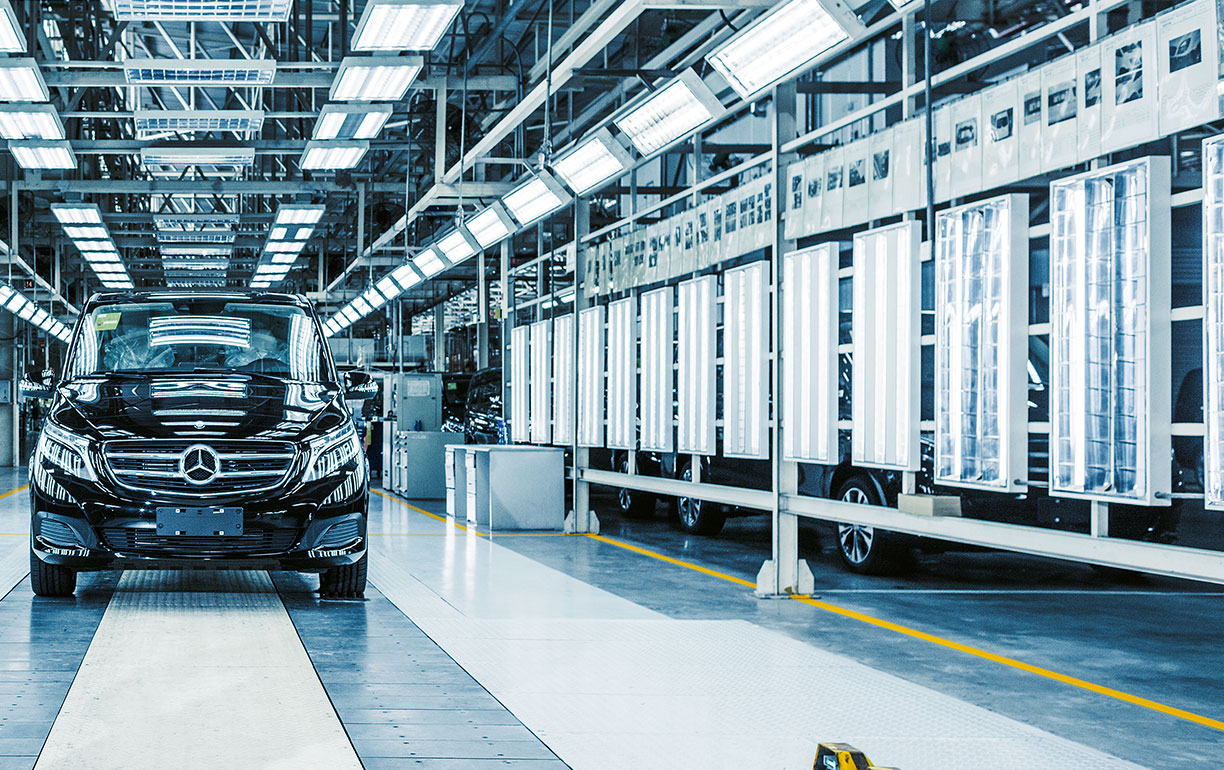
The Chinese upper and upper-middle class appreciate a sophisticated lifestyle. “In China we see far more people being chauffeur-driven than in the United States or in Europe,” Krupinski explains. That is particularly true for business people, who are often joined on trips by customers, partners or staff, in which case a classic limousine is simply too small. In their private lives, many Chinese not only travel with their wife and children but also take along parents and possibly even the children’s nanny. And when they do, they want a vehicle that befits their social status. Hence a Mercedes-Benz, and hence the V-Class.
“Fujian Benz has adapted the V-Class for the Chinese market and made it even more luxurious,” says Krupinski. As a result, the vehicle has features one would normally expect to find in an S-Class. This includes a large center console with refrigerator box and thermo-cup holders and special luxury comfort seats in the rear – ideal for business people who want to work during the ride or enjoy the seat’s indulgent massage function.
Van Segment with very Good growth prospects in China
“The V-Class has an enormous potential in China, as do both of our other Fujian Benz products, the Sprinter and the new Vito, which also have good growth prospects,” says Krupinski. Logistics experts like Shwa Zhang are already busy preparing for that particular scenario and planning the required capacities. “During ramp-up phases in production, we rely more often on airfreight imports.”
Fujian Benz also depends on air cargo consignments when it comes to exports. Prior to the launch of serial production, for example, pre-production cars are transported to the Stuttgart headquarters of Mercedes-Benz Vans, where the design engineers put the automobiles through their paces on the test benches. On request, components from China are flown to plants in Europe or the US. The luxury version of the center console, for instance, was purpose-developed for the Chinese market.
Regardless of whether it is to or from the Far East, the services provided by the logistics experts must always be in line with Mercedes-Benz’ high standards. “When we opt for an airfreight solution, then there is only one maxim: it has to work,” says Zhang, the logistics manager. “Ideally, we like to keep logistics costs as low as possible, but at the end of the day the ultimate objective is to ensure a reliable provision of supplies to our production.”
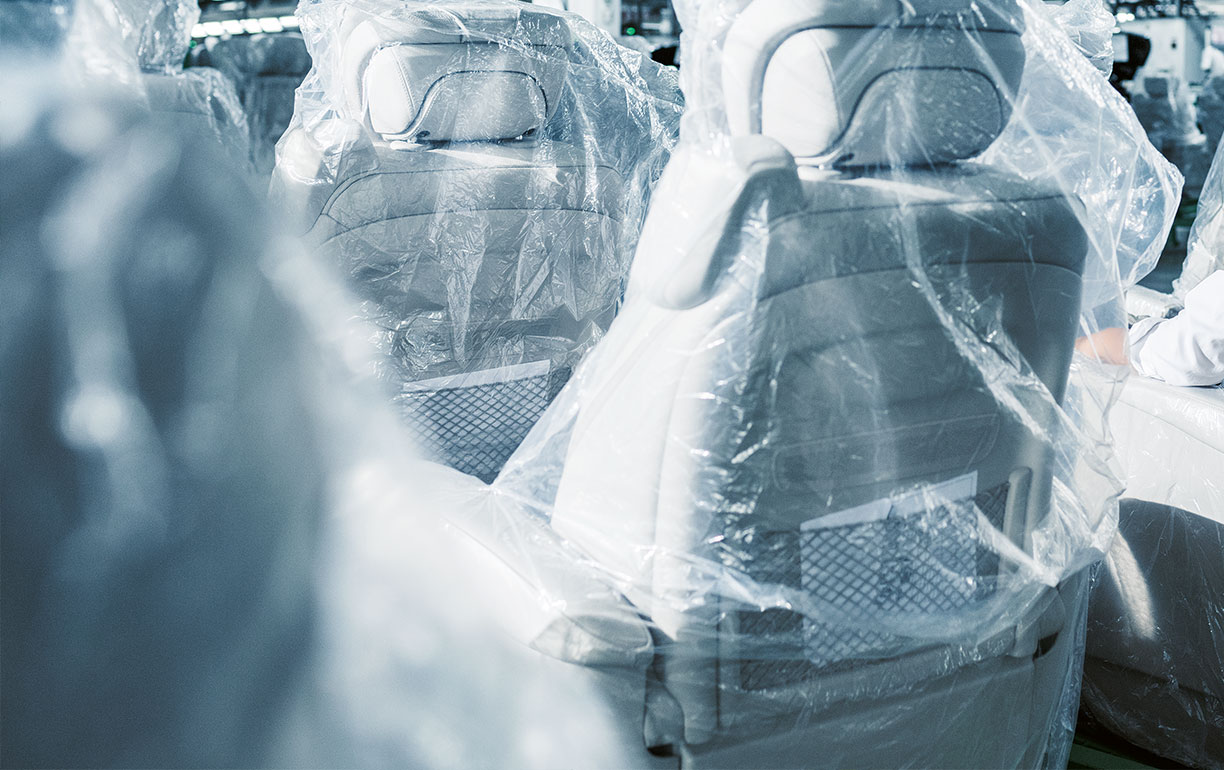
Luxury vans from Fuzhou.
The company Fujian Benz Automotive is a joint venture run by Daimler together with its Chinese partners. The company operates an automotive plant in Fuzhou, a city of two million people in China’s mainland Fujian province across from the island of Taiwan. Founded in 2007, the company now employs a staff of more than 1,400; 200 employees work in logistics and 500 in management, administration and service.
The lineup The plant in Fuzhou produces the Mercedes-Benz models V-Class, Vito and Sprinter, which are mainly used as luxurious MPVs, people carriers, ambulances and emergency police vehicles.
The production As in all traditional automotive plants, production in Fuzhou is split into the body shop, the paint shop and the final assembly. Fuzhou is also Mercedes-Benz’ first van research and development center outside of Germany.
The logistics Around 40 percent of the parts required on site are manufactured in China; 60 percent are either produced in the Spanish city of Vitoria, the company’s global lead plant for the production of all Mercedes-Benz midsize vans, or consolidated there and then consigned to Fuzhou. In 2015, 819 containers were transported from Vitoria to Fuzhou as ocean freight. On the airfreight side, the company accumulated a total of 1,314 AWBs.
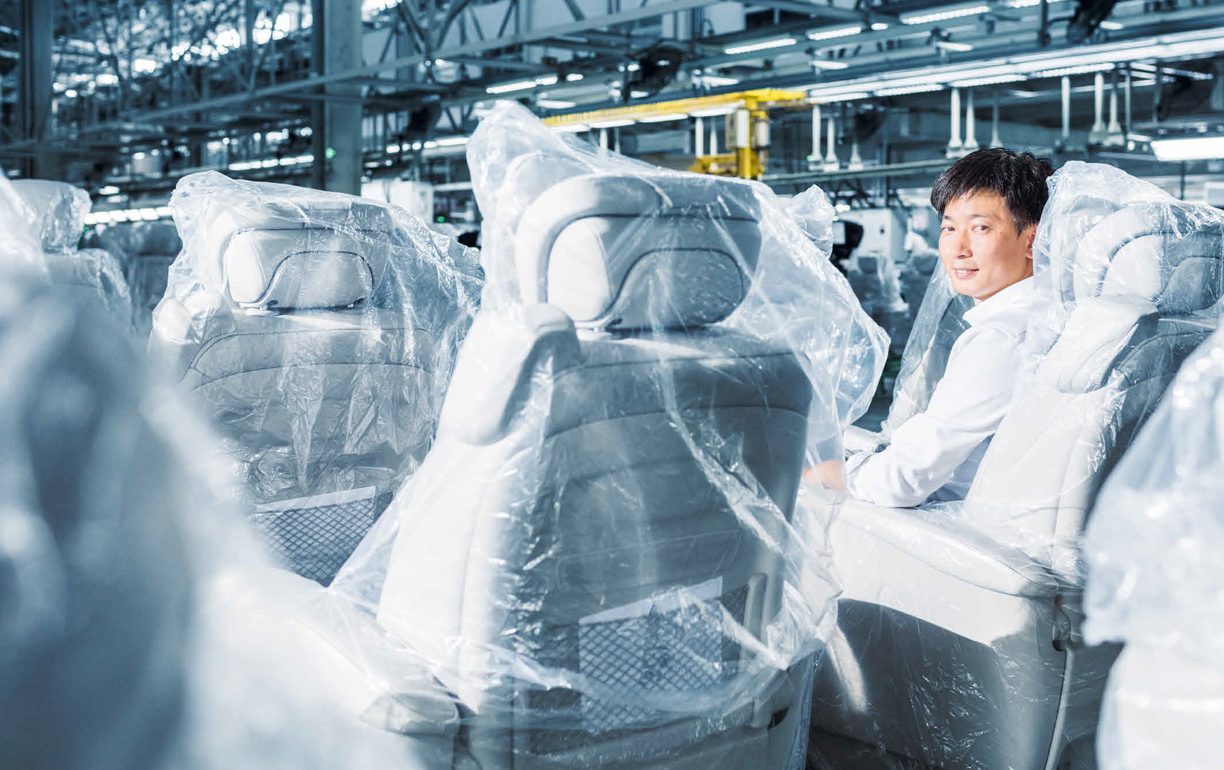
“We aim to minimize transport distances and use the most cost-effective mode of transport.”
Shwa Zhang, Senior Manager Logistics Warehouse Supply at Fujian Benz.
|
Shwa Zhang, Senior Manager Logistics Warehouse Supply at Fujian Benz, knows that turning 10,000 individual parts into a V-Class “Made in China for China” requires logistics that match Mercedes-Benz’ high standards. The manager is also responsible for the export of parts. The engineers at Fujian Benz are particularly proud of the luxurious seats |
and the high-end center console in the V-Class that features an integrated refrigerator box and thermo-cup holders. These were purpose-developed here in the plant, specifically with the luxury-oriented Chinese customer in mind. These components are now also being delivered to Spain, Germany and even Argentina. |
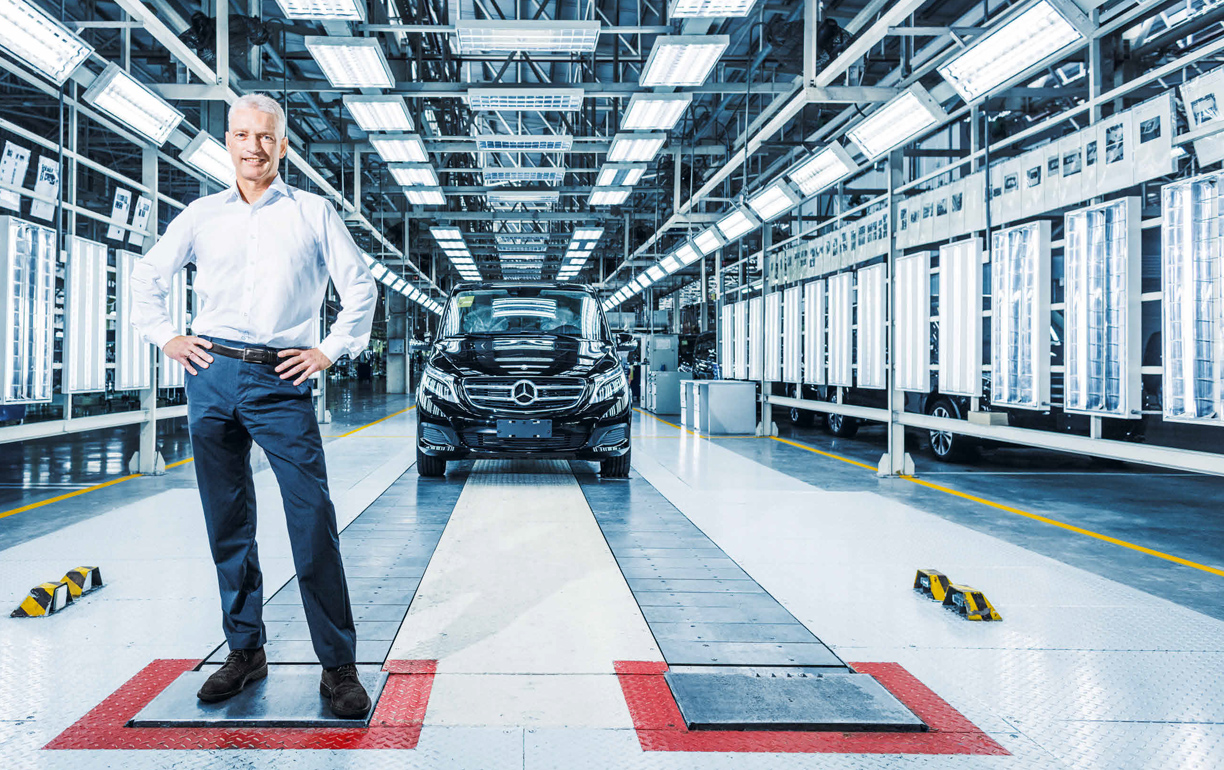
“Tailor-made to the demands of our Chinese customers, the V-Class comes with a host of luxurious equipment features that imply status while at the same time offering a prestigious, cozy ambience.”
Fujian Benz President and CEO Dr. Guido Krupinski in front of a V-Class in the final assembly of the plant in the Chinese city of Fuzhou.
“Both global and local.”
“Both global and local.”
|
3 questions for Frank Klein, Head of Production Mercedes-Benz Vans When does airfreight come into play in the case of Fuzhou? What is the recipe for success in the Chinese automotive market? China is the world’s largest automotive market. We at Mercedes-Benz Vans continue to believe in its significance. One of the most crucial levers for success was to localize the production of our vehicles and openly cater to the special demands of Chinese customers. In line with this, we expanded our location in Fuzhou in 2013 by incorporating our first van research and development center outside of Germany. When developing the new V-Class, we fully incorporated market and customer-specific requirements. As a result, the Chinese V-Class boasts a wealth of luxurious features that exude status and create a prestigious yet cozy flair. This is allowing us to establish ourselves as a leading manufacturer in the high-end MPV segment. |
How are the Mercedes-Benz Vans plants interlinked in logistical terms? |
An in-depth photo reportage from Fuzhou can be viewed on the “planet” app, available free from the App Store.
Photos:
Gareth Brown
